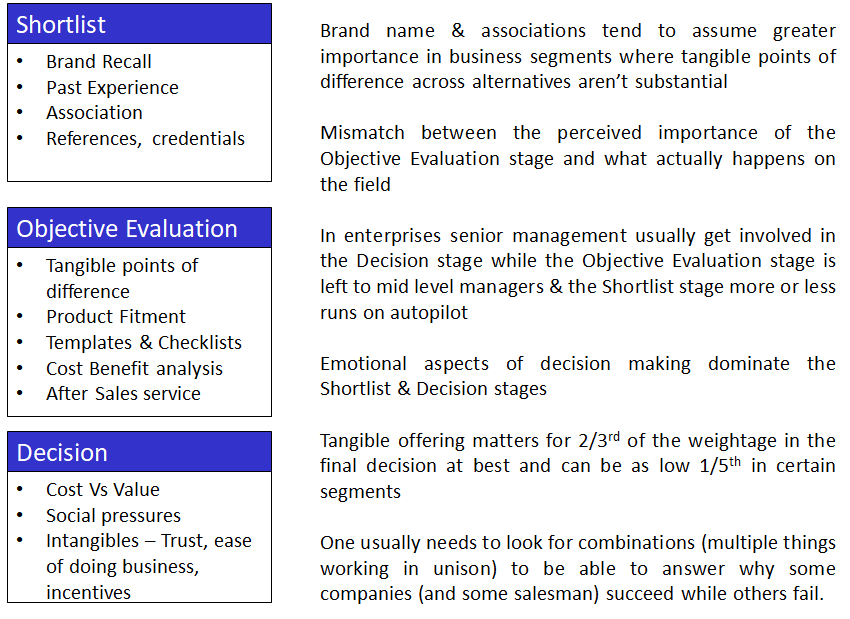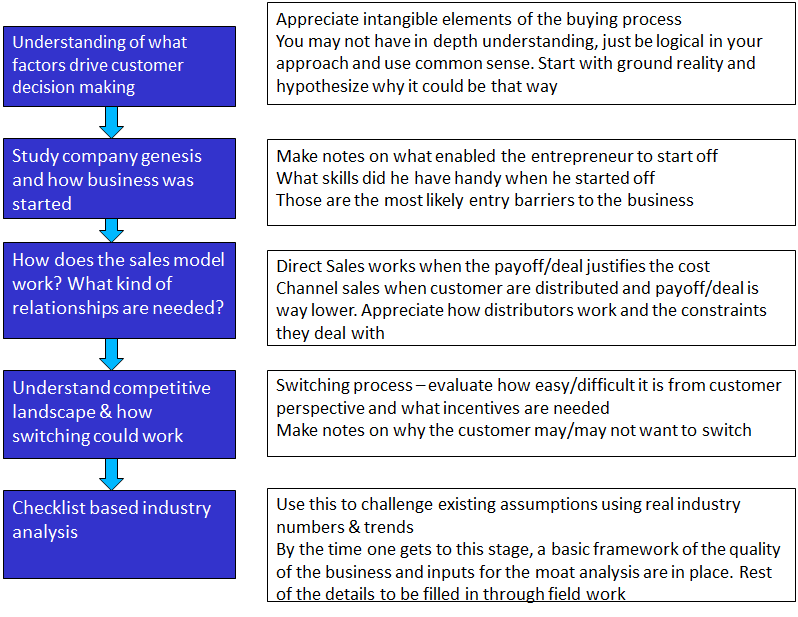Perfect Kedar! Another thought-provoking variant perspective arriving from personal experience sharing. There is great merit in these arguments esp. with the perspective of emerging moats…where things get clearer in 2-3 years of familiarity with business/management - it’s never on day 1. No business becomes great by itself without enabling tailwinds, that’s a given. But there are few that stand out and execute far better - multiple reasons including superior business model execution driven by superior Management.
There is no reason that both I & O digging (as you so aptly put it) outputs - shouldn’t be part of our BQ framework detailed data points. Please continue to share more perspectives from your experience set to incorporate. Unlike common perception, Frameworks aren’t about simplistic pattern matching (which some do fall prey to in lazy attempts, seen from folks we know), in-fact frameworks are all about heavy-duty grunge work sitting right behind the abstractions. Minus the business/industry/domain obsessed grunge-work, simply-fitting to frameworks is worthless, I agree.
I find exposure to frameworks help us achieve more structured deep-dives, which I am naturally inclined to. It brings much needed rigour. Now deep-dives can and should be attempted from completely open-ended divergent perspectives too. These can be equally rewarding. What works best for me is when we can balance/marry the two successfully. It happens naturally for us in our team - Ayush is always more open-ended naturally, me more structured naturally - wherever our interests converged it’s mostly worked it’s magic. So yes I do appreciate starting from a completely open divergent perspectives is actually great, as long as somewhere down the line we bring-in structure and rigour. Which is why, many might have noticed, this whole BQ pursuit is encouraging unstructured divergent inputs, at appropriate times we need to inject structure. Some have already complained to me, Donald there is no structure to the new BQ initiative, it is going all over the place ![]() , and I am letting on it’s more deliberate.
, and I am letting on it’s more deliberate.
So, as rightly pointed out by you - It’s NOT about fitting a business to a framework BEFORE you/team around you have done enough hard work on collecting the facts about the business/Management/industry/competitive forces. It’s AFTER. Absolutely, agreed.
Now to set some context right, from us framework-believers ![]() .
.
Some use-cases:
-
If one has a natural mindset like me that makes one very very choosy, and after 2-3-5-7 years of decent familiarity with the business/management and domain - where you are tracking multiple businesses that you think could be special - like what Ayush’s pipeline keeps supplying - having a super choosy framework that progressively gets refined better and better makes enormous sense. One needs to pick just 2 from a Concentrated Portfolio perspective in a year. Sans any framework, I wouldn’t even know what to look for, let alone choose well. A framework certainly helps sharpen and retain focus when one is spoilt for choices - not difficult to imagine the situation only a few months back in the financial services space - did most people automatically choose the number one performing business in the financial service space, despite most sharp investors probably knowing the numbers behind only too well?? Fitting to the framework, after all grunge work is done, when spoilt for choices has worked beautifully in the last 2 years too, and created huge wealth. A Bajaj Finance, a PI industries are prime examples, as are HDFC Life, and many others. Many ways to skin the cat
 , period. One should stay with what one is comfortable with naturally, and occasionally intentionally break comfort zones to expand horizons, like you are doing now.
, period. One should stay with what one is comfortable with naturally, and occasionally intentionally break comfort zones to expand horizons, like you are doing now. -
An often neglected part is proper Risk Evaluation. Without that, we are probably just plain lucky; can’t sustain and ensure repeatability of success. I am pretty convinced - even more than BQ/MQ we need a proper discussion/debate thread towards a proper VP Risk Management Framework 2.0. We know only too well what happened in the last 2 years for almost all folks we know, don’t we? A Risk Management framework is the need of the hour for VP 2.0 and essential for sustainability in the next decade. Only this evening I had a brief very invigorating discussion with someone (whom we all know) who perhaps has the best performance in last 2 years of folks I know - and he swears by Risk Evaluation - a framework that is work-in-progress for him too, no doubt. But hey VP Risk Management Framework 2.0 has a committed believer and driver, who will launch that most useful thread potentially (in our current Investment learning curve context) hopefully pretty soon, on VP.
-
And don’t we know the best use-case for frameworks. Exposing newbies quickly to best practice thinking and execution, get them to quickly up the learning curve, for the most passionate and hungry learners in any trade. Had Mr D not exposed me to a Capital Allocation thinking framework that got me hooked in 2011 that we captured back in a thread and got everyone than majorly involved, most of Team VP newbie performance curves would probably look very different today.
-
Am aware frameworks have much lesser utility value NOW to senior practiced professionals perhaps because innately they have learnt to do their job better and better - but how would someone unexposed to your set of skills aspire to capture that for his and others benefit. Only via frameworks - is my true enduring belief and aspiration - that we can think of capturing back best practices from most successful sharp minds around, and try and transfer that to every passionate aspiring learner - that we can aspire to create a scale-multiplier effect?
-
Some people are naturally skilled and very very sharp - they will always have less value for frameworks - like our very own Hitman @hitesh2710 - he is so sharp that he picks up on the key abstracted learnings the fastest, and yet he knows and acknowledges the value of frameworks - because again he knows he will smartly imbibe the key best practices unlocked, probably the fastest
 . and nicely embed them in, in his own sub-conscious framework. Oh! Yes, every practised senior has a decision-making framework wired-in that works well for him. Our endeavour is to unlock that magical wiring and bung in some of that in a structured framework :)
. and nicely embed them in, in his own sub-conscious framework. Oh! Yes, every practised senior has a decision-making framework wired-in that works well for him. Our endeavour is to unlock that magical wiring and bung in some of that in a structured framework :)
Rest my case on the utility value of frameworks, for everyone!
Bottomline - everyone NOT convinced about the framework pursuit (well-meaning friends call it my obsession) please IGNORE frameworks case and fitment before, or after debates ![]() . Just be generous and share your experience-set in what worked and what didn’t - and it’s for us framework-believers to find a way to abstract the key learning-skills back into the framework.
. Just be generous and share your experience-set in what worked and what didn’t - and it’s for us framework-believers to find a way to abstract the key learning-skills back into the framework.


